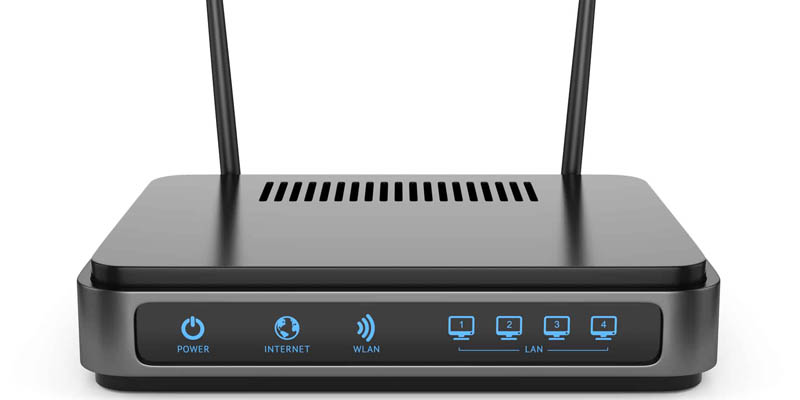Electronics Industries
The term "Electronics Industries" refers to the various sectors and businesses involved in the design, manufacturing, and distribution of electronic components, devices, and systems. Electronics play a crucial role in modern society, powering everything from consumer gadgets and appliances to industrial equipment and telecommunications networks.
Key aspects and subsectors of the electronics industry:
(1) Consumer Electronics: This sector includes products like smartphones, tablets, laptops, televisions, audio systems, cameras, gaming consoles, and other electronic gadgets designed for personal use.

(2) Semiconductor Industry: Semiconductors are the building blocks of electronic devices. This industry focuses on the design and production of integrated circuits (ICs) and other semiconductor devices. Companies in this sector manufacture processors, memory chips, sensors, and more.
(3) Electronic Components: This segment involves the production of individual electronic components like resistors, capacitors, diodes, transistors, and connectors. These components are used in various electronic products and systems.
(4) Industrial Electronics: Industrial electronics encompasses equipment and systems used in manufacturing, automation, and control processes. Examples include programmable logic controllers (PLCs), robotics, and sensors used in factories and industrial settings.
(5) Telecommunications: Telecommunications equipment manufacturers produce devices and infrastructure for communication networks. This includes routers, switches, mobile network equipment, and optical fiber components.

(6) Medical Electronics: This subsector focuses on electronic devices and equipment used in healthcare, including medical imaging devices, patient monitoring systems, and diagnostic equipment.
(7) Automotive Electronics: Modern vehicles are equipped with a wide range of electronic systems, including engine control units, infotainment systems, safety features, and autonomous driving technologies.
(8) Aerospace and Defense Electronics: Aerospace and defense industries rely heavily on advanced electronic systems for navigation, communication, surveillance, and weaponry.
(9) Energy and Power Electronics: Power electronics play a crucial role in energy conversion and distribution. This sector involves the development of inverters, converters, and energy management systems for renewable energy sources and electric vehicles.
Importance of precision machining for the electronics industry
Tight Tolerances: Electronic components often require extremely tight tolerances to function correctly. Precision machining processes ensure that these tight tolerances are consistently met, guaranteeing the reliability and performance of electronic devices.
Miniaturization: The electronics industry is characterized by the ongoing trend of miniaturization. Precision machining enables the creation of intricate and small-scale components, including microchips, connectors, and sensors, which are essential for compact and efficient electronic devices.
High Accuracy: Precision machining techniques, such as CNC milling and EDM, provide a high level of accuracy, ensuring that components are manufactured with precision. This accuracy is vital for components like circuit boards, which rely on precise alignment and positioning of various elements.
Complex Geometries: Many electronic components have intricate and complex shapes or features. Precision machining processes can produce these complex geometries with precision and consistency, whether it's creating fine channels in microfluidic devices or producing intricate patterns on semiconductor wafers.
Prototyping and Customization: In the electronics industry, rapid prototyping and customization are essential for product development. Precision machining allows for the quick production of prototypes and small runs of custom components, enabling manufacturers to test and iterate designs efficiently.
Quality Control: The electronics industry demands strict quality control to ensure that products meet the highest standards of reliability and performance. Precision machining is accompanied by robust quality control processes to identify and rectify any deviations from specifications.
Surface Finish: Precision machining processes can achieve smooth and polished surface finishes, which are crucial for components like optical lenses, connectors, and semiconductor devices where surface quality directly impacts performance.
Thermal Management: Many electronic components generate heat during operation. Precision machining is used to create heat sinks and thermal management solutions that help dissipate heat and maintain the desired operating temperatures, preventing overheating and damage.
Mass Production: Precision machining is not limited to prototyping; it is also integral to mass production of electronic components. High-precision machining can be scaled up for large volume manufacturing, ensuring consistent quality across production runs.
Material Compatibility: The electronics industry uses a wide range of materials, including metals, plastics, ceramics, and composites. Precision machining processes are adaptable to work with these materials, allowing for versatility in component production.
Automation: Automation in precision machining enhances efficiency and repeatability. Automated CNC machines and robotics are used to ensure consistent and high-quality production in the electronics industry.
Precision machining creates high-precision components, guarantees tight tolerances, supports miniaturisation and ensures the accuracy and quality required for the reliable and efficient operation of electronic equipment.
What precision machining processes are involved in the electronics industry
The electronics industry relies on various precision machining processes to manufacture critical components and parts for electronic devices and systems. These processes are essential for achieving the tight tolerances, accuracy, and quality required for electronic components.
1. CNC (Computer Numerical Control) Machining:
CNC machining involves the use of computer-controlled machines to precisely remove material from a workpiece. CNC milling and CNC turning are common processes used to create precise components with intricate shapes and tight tolerances. These processes are widely used for producing enclosures, connectors, and custom mechanical parts in electronics.
2. Electrical Discharge Machining (EDM):
EDM is a non-contact machining process that uses electrical sparks to remove material from a workpiece. It is highly accurate and suitable for machining intricate shapes, particularly in hard or heat-resistant materials like metals and ceramics. EDM is often used in the production of molds and dies for electronics components.
3. Wire EDM (WEDM):
This variation of EDM uses a thin, electrically charged wire to cut through the workpiece. It's commonly used for producing precise, high-precision components like microelectromechanical systems (MEMS) and small, complex parts in the electronics industry.
4. Laser Cutting and Laser Micromachining:
Lasers are used for cutting, drilling, and marking various materials with high precision. Laser cutting is often used to fabricate intricate shapes in thin sheets of metal or plastic for electronic enclosures and components. Laser micromachining is used to create microstructures and fine features on semiconductor wafers and other small electronic parts.
5. Chemical Machining (Chemical Etching):
Chemical machining involves the selective removal of material using chemical processes. It is often employed to create fine, intricate patterns, and circuits on printed circuit boards (PCBs) and microfabricated devices. Chemical etching allows for precise control over material removal.
6. Grinding and Surface Finishing:
Precision grinding is used to achieve tight tolerances and smooth surface finishes on components such as gears, shafts, and bearing surfaces. Surface finishing processes like polishing and lapping are crucial for optical components, connectors, and semiconductor wafers.
7. Photochemical Machining (Photo Etching):
This process involves using photosensitive materials and chemical etching to create precise patterns and intricate features on thin metal sheets. It's commonly used for producing fine, high-precision components like lead frames and connectors.
8. Microfabrication and MEMS Processes:
Microfabrication techniques, such as photolithography, thin-film deposition, and microelectromechanical systems (MEMS) fabrication, are specialized precision machining processes used to create miniature electronic devices, sensors, and microstructures.
9. Electrochemical Machining (ECM):
ECM is a non-traditional machining process that uses electrolysis to remove material from a workpiece. It is used for intricate shaping and contouring of conductive materials and can be applied to make molds and dies for electronic components.
10. Ultrasonic Machining:
Ultrasonic machining uses high-frequency vibrations combined with abrasive slurry to remove material with precision. It is employed in applications where very fine features and complex shapes are required, such as in the production of piezoelectric components used in electronics.
What important components are the above processes used to produce in the electronics industry?
Printed Circuit Boards (PCBs): PCBs are the foundation of most electronic devices. Precision machining processes like chemical etching, laser cutting, and photolithography are used to create intricate circuit patterns on PCBs.
Semiconductor Components: The semiconductor industry relies on precision machining for various components, including silicon wafers, microchips, and MEMS devices. Processes like wafer dicing, wire bonding, and microfabrication are essential for semiconductor manufacturing.
Connectors: Connectors and terminals used in electronic devices, such as USB connectors, HDMI ports, and socket connectors, are often produced with precision machining to ensure accurate alignment and electrical connectivity.
Enclosures and Housings: Precision machining processes like CNC milling and laser cutting are used to create custom enclosures and housings for electronic devices, ensuring proper fit, protection, and aesthetics.
Heat Sinks: Heat sinks are crucial for dissipating heat generated by electronic components. Precision machining is employed to create heat sinks with optimized fin structures and surface finishes to enhance thermal performance.
Microelectromechanical Systems (MEMS): MEMS devices, which include accelerometers, gyroscopes, and microphones, rely on precision machining for fabrication. These devices often involve intricate structures with moving parts.
Optical Components: Lenses, mirrors, prisms, and other optical components used in cameras, sensors, and displays are produced with precision machining processes to achieve precise shapes and surface finishes.
Microfluidic Devices: Precision machining techniques like micromachining and laser ablation are used to create microfluidic channels and structures for applications in lab-on-a-chip devices and medical diagnostics.
Sensors: Many types of sensors, such as pressure sensors, temperature sensors, and gas sensors, require precision machining to create sensitive elements and housings that ensure accurate measurement.
RF (Radio Frequency) Components: Precision machining is used to create RF components like waveguides, antennas, and RF connectors that are vital for wireless communication and RF circuitry.
Custom Mechanical Parts: Precision machining is employed to create custom mechanical parts, such as gears, shafts, and brackets, used in various electronic devices and systems.
Lead Frames: Precision machining processes like photochemical machining are used to produce lead frames for semiconductor packaging, ensuring precise electrical connections.
Micro- and Nanostructures: Precision machining is indispensable for creating micro- and nanostructures used in MEMS devices, lab-on-a-chip systems, and advanced sensors.
Molds and Dies: Precision machining is used to create molds and dies for injection molding and other manufacturing processes used to produce plastic and metal components in the electronics industry.
Thin-Film Components: Precision machining techniques like photolithography and thin-film deposition are used to create thin-film resistors, capacitors, and inductors integrated into electronic circuits.
*These components represent just a portion of the many parts and elements produced through precision machining in the electronics industry.
Future Trends in the Electronics Industry

The electronics industry is dynamic and continues to evolve, driven by rapid technological advances and changing consumer demands.
5G and Beyond: Deployment of 5G networks has already begun, promising to revolutionize connectivity with faster data transfer, lower latency, and a thriving Internet of Things (IoT). Beyond 5G, research into more advanced wireless technologies is also underway.
Internet of Things (IoT): The IoT is expanding, connecting everyday objects and devices to the Internet. This trend will continue and will be applied to smart homes, cities, healthcare, manufacturing, agriculture and more.
Artificial Intelligence (AI): Artificial intelligence is becoming an integral part of electronics, powering applications such as voice assistants, self-driving cars, predictive analytics, and robotics. Customized AI hardware and gas pedals are expected to proliferate.
Edge computing: Edge computing is gaining traction in order to reduce latency and process data closer to the source. This is particularly important for IoT applications and real-time processing of data generated by sensors and devices.
Quantum Computing: Although still in its early stages, quantum computing has the potential to revolutionize computing power and solve complex problems that are currently unsolvable by traditional computers.
Flexible electronics: Flexible and bendable electronics are paving the way for new types of devices such as foldable smartphones and wearable electronics. These technologies will continue to evolve.
Sustainability: The electronics industry is increasingly focused on sustainability. This includes reducing e-waste, using environmentally friendly materials and designing energy-efficient devices. Circular economy principles are becoming increasingly important.
Advanced Displays: With the development of technologies such as OLED, MicroLED and MiniLED, displays have improved color accuracy, resolution and energy efficiency. Foldable and scrollable displays are expected to become more common.
Electrification and Electric Vehicles: The shift to electric vehicles (EVs) is accelerating, driving demand for advanced battery technologies, charging infrastructure, and EV design innovations.
Biotechnology Integration: Electronics are increasingly being integrated with biotechnology for healthcare applications such as wearable health monitors, remote patient monitoring and bioinformatics.
Augmented and Virtual Reality (AR/VR): AR and VR technologies are moving beyond gaming and entertainment to applications in training, education, healthcare, and remote collaboration.
Cybersecurity: As more and more devices become connected, the need for robust cybersecurity solutions to protect data and infrastructure from cyber threats and attacks becomes critical.
Robotics: With advances in robotics hardware and artificial intelligence capabilities, robotics is expanding from manufacturing and healthcare to industries as diverse as logistics and agriculture.
Biodegradable electronics: Research into biodegradable electronics is underway, which could lead to environmentally friendly disposable devices.
Space electronics: The aerospace industry is increasingly demanding electronics for satellite communications, exploration and space travel.
DIGITAL HEALTH: Digital healthcare solutions including remote monitoring, telemedicine and health wearables are expected to evolve as healthcare becomes more connected and data-driven.
In the future, electronics will be deeply integrated into every aspect of our lives, from the way we communicate and work, to the way we interact with our surroundings and our health concerns. Innovations in electronics will continue to drive advances in a variety of industries, including precision manufacturing.
Consult GD-HUB for your electronic solutions.